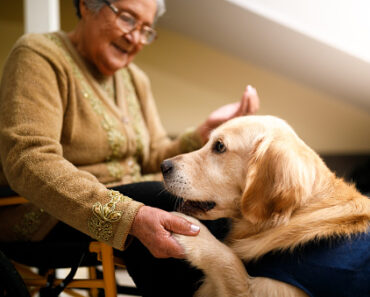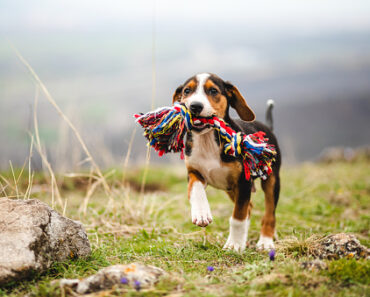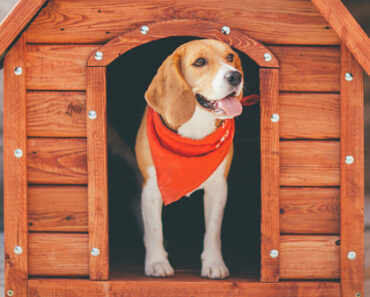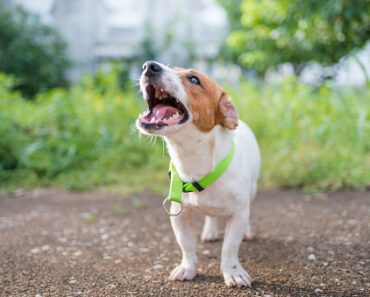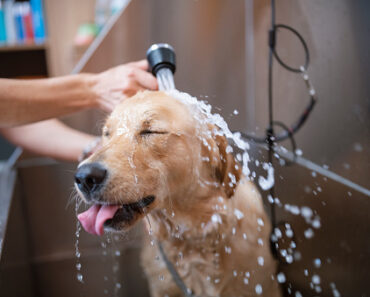It is frequent that couples without children transfer all their affection to their dog, which can sometimes be a substitute for the children that the couple does not have yet. The dog is then at the center of all the attention, sometimes benefiting from much more attention than necessary. When the project of having a child becomes a reality, the couple turns away from their animal, giving it less attention and time. The female dog, for its part, may adapt more or less well to these changes: shorter walks, less play time, no more right to climb on the couch, to act crazy…
The actual arrival of the baby will only confirm these changes in habits and, sometimes, frustrate him. Smells, noises and movements will also change radically. It is thus essential to prepare these changes before the arrival of the baby.

Before the arrival of the baby
In the months leading up to the birth, you must gradually reorganize your female dog’s life and pace it according to the schedule you will have when the baby arrives: outings, meals and playtime must now be at fixed times. It’s up to you to decide on these times, and not to the dog to claim.
You should also check that the dog respects the rules of good behavior and has its place in the family hierarchy.
You can forbid access to the newborn’s room, or on the contrary, let him explore the room before the baby arrives, so that he gets used to the objects and smells. On the other hand, it is strictly forbidden for the dog to leave the room with an object of the future child!
The sleeping place of the female dog is also an essential aspect of the preparation of the arrival of the newborn. Indeed, it must have a basket on the ground, away from the agitation and the noise. It is essential that he can rest quietly, otherwise he may become irritable or even aggressive.
Finally, any hyperactive or aggressive behavior during this adaptation period should prompt you to make an appointment with your veterinarian for a behavioral consultation.
Return from maternity and first days with baby
When you return home, your dog will be able to smell the baby from a distance thanks to his nose. He will generally not jump on him, sensing that he is a fragile being, protected by the mother. Most of the time, he will have a withdrawal movement. Indeed, the female dog always keeps the other members of the pack away when she is nursing or cuddling her pups. If your female dog is hyperactive, teach her to keep a safe distance.
When the female dog and the whole family are calm, let him approach the child and smell him. For the first few moments, it’s best to keep him on a leash to control unexpected situations. Do not push him away when he approaches, welcome him warmly.
The dog should not lick the child and should never growl at him. Be firm, it is essential! Do not hesitate to isolate the dog when the child cries or screams, as these moments are sources of stress for him.
There is a balance to be struck between keeping the dog away from the child for its own peace of mind and for the child’s safety, and allowing the dog to participate in daily activities. The latter must not feel excluded and neglected.
Baby and dog cohabitation
Some advice to apply:
- Under no circumstances should you leave the dog and the child alone.
- Do not let the dog sleep in the baby’s room.
- Isolate the dog when your baby cries, screams or becomes agitated.
- Teach the dog to stay calm, down, when you are nursing or bottle-feeding your baby.
- Set aside a few moments during the day when you are exclusively in charge of the dog
- Don’t hesitate to take the dog with you on walks with the baby.
Be careful!
- If possible, do not punish the dog in the presence of the baby. Indeed, the punishment can be associated with the baby and the animal can become aggressive towards him afterwards. Conversely, do not punish the baby in the presence of the dog either, as the latter could take his defense and intervene nervously.
- Also, do not hesitate to consult your veterinarian if, in the presence of the baby, the dog gets agitated, turns around the cradle, growls, shows its teeth, or on the contrary tries to protect the child. Don’t wait until it’s too late!
- Finally, beware of clichés: there is no such thing as a “nice breed” or a “nasty breed”. You must be vigilant and strict with all dogs, no matter how nice they are. 60% of child bite cases are committed by the family dog.
After that, you should start teaching your child the behaviors to avoid in the presence of the dog:
- Disturbing the dog while eating
- Using the dog’s toys
- Pulling the dog’s tail or ears, chewing, squeezing, climbing on the dog, lying on the dog…
- Disturbing the dog while he is sleeping
- Pulling by the collar
- Wedging the dog in a corner
- Putting your hand on the dog’s head to pet it: the dog may feel dominated
Beware of your baby’s health
The health of the infant is fragile and some precautions must be taken with regard to the dog. Thus, the animal will have to be wormed regularly: every 15 days until 6 weeks, then every month until 6 months, then 4 times a year from 6 months. The deworming will allow in particular to fight against the ascaris, transmissible to the man. He must also be treated against fleas every month because fleas are likely to transmit worms to the dog which are also transmissible to humans and especially to children.
Moreover, many pathogens are transmissible to man by oral route (salmonellosis, giardiosis…) and strict hygiene rules must be taken: systematically disinfect toys and bottles touched by the dog, prevent the dog from licking the newborn, from eating with him, from sleeping with him, wash the child’s hands when he touches your faithful companion…

